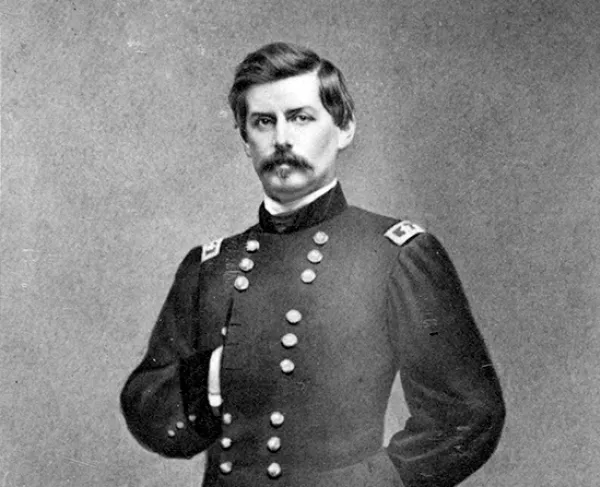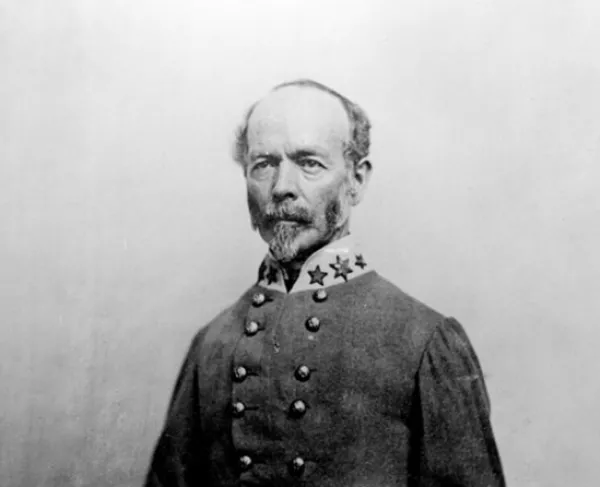
Seven Pines
Fair Oaks
Henrico County, VA | May 31 - Jun 1, 1862
Fought over two days during the Peninsula Campaign, the Battle of Seven Pines resulted in heavy losses for both sides and ended with the wounding of Confederate commander Joseph E. Johnston. Gen. Robert E. Lee replaced Johnson as commander of the Confederate army.
How It Ended
Inconclusive. After fighting for two days, May 31 - June 1, 1862, and failing to dislodge the Federals, the Confederate army retreated from Seven Pines. Later that day, June 1, 1862, Robert E. Lee received command of the Confederate army after Gen. Joseph E. Johnston was wounded.
In Context
After retreating from Williamsburg, Virginia, Confederate General Joseph E. Johnston fell back to Richmond, Virginia. Johnson looked for an opportunity to strike at Gen. George B. McClellan’s larger army and hopefully turn the tide of the campaign.
After the Battle of Williamsburg, fought on May 5, 1862, McClellan's army advanced slowly but steadily toward the Confederate capital of Richmond, Virginia. Reinforcements enabled McClellan to establish two new army corps on the peninsula, in addition to his original three. A plan to send McClellan another corps was scrapped after Union forces in the Shenandoah Valley suffered a defeat at the Battle of Front Royal, May 23, 1862, at the hands of Gen. Thomas J. “Stonewall” Jackson’s Confederates. By the end of May, McClellan mustered around 105,000 men. Once outside Richmond, McClellan deployed his army facing the Confederates and moved his supply base forward to White House Landing. However, his army dangerously straddled the Chickahominy River, which ran roughly down the center of the peninsula. Three army corps were north of the river, and two were south of it. During the spring, the river was known to swell with floodwaters, and the Confederates had destroyed most of the bridges in front of their lines.
South of the river, the Southerners outnumbered the Northern forces almost two to one. Seizing the initiative, Johnston planned to overwhelm the IV Corps under Gen. Erasmus Keyes and the III Corps led by Gen. Samuel P. Heintzelman, isolated south of the river with four divisions.
The Battle of Seven Pines began late on May 31, 1862. The Confederates succeeded in driving Keyes’ IV Corps and inflicting heavy casualties on the Union forces. Timely reinforcements arrived from Heintzelman's corps to support Keyes and hold the Union left.
A mile north of Seven Pines, the Confederate division under Gen. William C. Whiting attacked the Federal right flank near Fair Oaks Station on the Richmond & York Railroad. The Union line stabilized when Gen. Edwin Sumner’s II Corps reinforcements crossed the Chickahominy over Grapevine Bridge. Johnston fell wounded and command of the Confederate army devolved to Gen. Gustavus W. Smith.
Early on June 1, the Confederates renewed their assaults against the Federals, who had brought up more reinforcements. Two Confederate brigades attacked Gen. Israel Richardson’s II Corps division posted along the railroad. While fighting there, a Confederate minie ball shattered Gen. Oliver O. Howard’s right arm; the arm was amputated, and Howard was out of action for several months. Gen. Joseph Hooker’s III Corps division attacked as the Confederates withdrew, ending the two days of fighting.
5,739
7,997
Both sides claimed victory at Seven Pines Johnston's wounding profoundly influenced the war: Davis selected his military advisor, Gen. Robert E. Lee, to replace Johnston. “This may be hailed as the harbinger of a bright fortune,” wrote one of Davis’ aides. Nevertheless, by the end of the month, the more aggressive Lee initiated the Seven Days’ Battles, leading to a Union retreat from the gates of Richmond.
President Jefferson Davis appointed Robert E. Lee to command the Confederate army defending Richmond after Seven Pines. This dramatically changed the course of the war for the Confederates. Lee was more aggressive and less defensive than Johnston and successfully pushed McClellan away from Richmond.
The Chickahominy River played an essential role in the decision to fight at Seven Pines. With the recent rains flooding much of the area and numerous bridges in a state of disrepair, much of McClellan’s army was forced to stay on the east side of the river. This cut two Union corps away from the army and gave Johnson the motivation to strike.
Seven Pines: Featured Resources
All battles of the Peninsula Campaign
Related Battles
34,000
39,000
5,739
7,997















